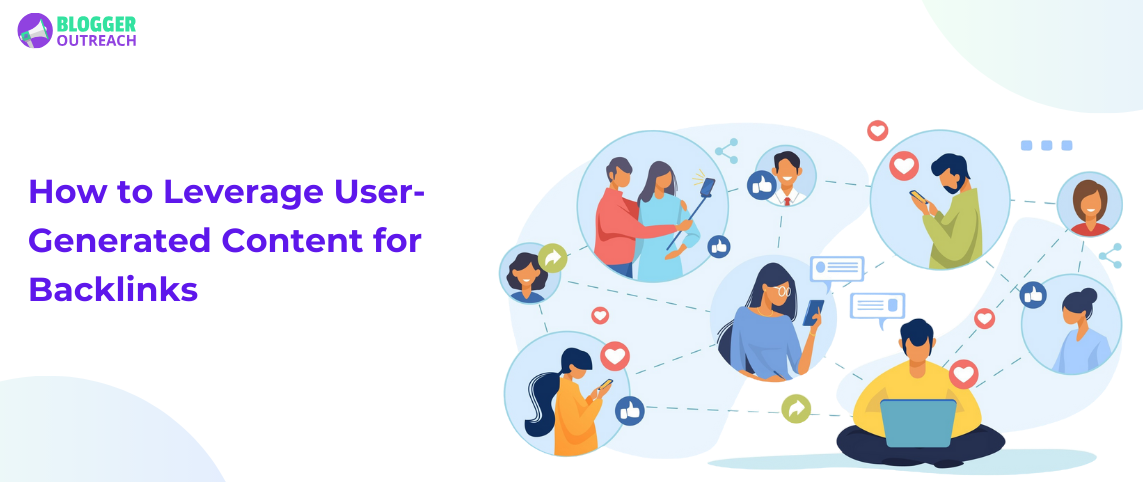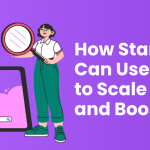Table Of Content [hide]
Higher, higher, and higher! Isn’t that what you want on SERPs?
Backlinks get you right there. Did you know that, according to AHREFS, backlinks are one of the top three ranking factors for Google’s algorithm?
But backlinking isn’t a trending hot SEO practice. Then why are we talking about it now?
What compelled us is the innovative evolvement of this antique SEO practice- User-generated content for backlinks!
We’ve always recognized UGC as a great source for building social credibility for brands, as this content comes directly from users. That said, backlinks help websites enhance Domain Authority (DA) and ultimately rank higher.
Now what if we mix these two great ideas?
Then we can increase our website’s credibility along with authority. What we produce is a high-ranking website discovered by users via the most credible sources- other users! A perfect digital marketing symbiosis.
Now let’s get back to the ground and figure out how to do this.
Understanding User-Generated Content

UGC is brand-specific content created by consumers and shared on social media and other digital channels as reviews, comments, photos, videos, and blogs. Unlike most digital content, UGC comes from voluntary and cost-free sources- customer’s excitement, satisfaction, or dissatisfaction with your brand.
Having said that, UGC has great potential to influence buying decisions. According to Adweek, 85% of individuals believe user-generated content holds more sway than branded content.
Why?
- Fighting trust issues: UGC is the raw and authentic perspective of real customers. UGC campaigns make brands appear more authentic, leading to increased trust and loyalty among customers. 90% of shoppers rely on product reviews before making a purchase. Thus, UGC reinforces the reliability of a brand’s products and builds trust with the target audience.
- Building a sense of belonging: We naturally seek a sense of belonging. User-generated content supports this natural urge by creating communities based on shared interests. This fosters buzz and conversation among consumers, driving demand through real-life enthusiasm.
Therefore, for marketers, UGC is a gold mine. It’s free and authentic. Thanks to digital channels and tools, it’s trackable. All we need is to learn how to leverage it.
The Role Of Backlinks In SEO
Google’s algorithm evolved to resemble an intense academic researcher. It wears thick glasses, is highly skeptical, and seeks proven information. Consequently, SERPs are its research papers for particular user queries.
To make it to these papers, you must provide Google with credible information. And the best way to make a piece of information credible is by having multiple people attest to it.
This is where backlinks bat a thousand.
But you cannot stop at simply qualifying for the SEO race. The end goal is to capture 1st position on SERPs for your targeted keywords. For that, you need to boost your backlinks both in quantity and quality.
UGC offers new hope for digital marketers. It can attract high-quality, relevant backlinks.
User-Generated Content & Backlinks
According to the 2024 digital report, the average time spent by global Android users on the YouTube mobile app is 28 hours and 5 minutes.
If we ask you to close your eyes and tell us a line that most YouTube creators utter, what would it be?
“Like, share, and subscribe?”
Now do it once more. What is it you hear?
“Links are in the description box!”
And that precisely is our focus. How to get your link into a relevant creator or user’s description box, comments, posts, and blogs?
UGC is both an indirect and direct source of link building for brands.
Links on Forums & Comments
Users often link back to your website on online forums or comment sections on blog posts. However, this does not essentially influence your SEO rank. Their no-follow and UGC link attributes hinder these backlinks to have any effect on your backlink profile.
Quick Insight:
- No-follow link attribute: A no-follow link is a hyperlink that includes a rel=”nofollow” attribute. Google first introduced this attribute in 2005 to combat comment spam. These links do not contribute to a site’s backlink profile. Later, the UGC link attribute replaced it for comment sections and other UGC across digital channels.
- UGC link attribute: Introduced in 2019, the UGC link attribute (rel=”UGC”) indicates user-generated content. It helps Google to identify linking behavior on the web.
Nevertheless, backlinks come with another important objective- driving traffic. This is what UGC links contribute to when present in comment sections and forums.
Users redirected to your website from peer-content may buy. They have a high potential to make purchasing decisions.

This advantage is especially relevant for product-based companies and eCommerce businesses. These links positively affect sales and revenue.
UGC That Encourages Webmasters To Link Your Website
For strong backlinks, high-quality content is a prerequisite. What if you get that content without paying an agency, your employees, or any content creator?
Webmasters, relevant brands, and news sites come across high-quality user-generated content like blog posts, images, and videos. This gets them interested in your content quality.
The psychology behind this- “If your users can create such great content, so can you.”
This leads to an outburst of natural link-building opportunities. You can get requests for cover stories, informative blogs, and guest posting.
Now imagine featuring high-quality UGC on your website, outreach email campaigns, and other marketing activities. You can attract backlinking opportunities without spending a single penny.
Here are some cool examples of how brands are using UGC to make their websites more attractive and LINKABLE!
Sephora built a “community gallery” page on their website to share images of real users wearing their products.

Another quirky instance comes from a small publication company called Mountain Gazette.

This is their homepage. They carefully curate subscriber testimonials that match their brand tone.
With every website update, Mountain Gazette changes one quirky testimonial with another. Or should we say their banner content? We only felt sorry for the copywriter!
When Google Shows Social Media UGC In Search Results
As already discussed, social media backlinks have no direct impact on your website’s SEO rank. These links from platforms like X, Instagram, Pinterest, etc. are no-follow in nature.
At the same time, we often come across social media pages and mentions on Google’s search results.

Social networks have become the new search engines, reshaping how people look for information. Younger generations prefer visual content. Nearly 40% of 18 to 24-year-olds use TikTok or Instagram as their first search tool.
This shift is already impacting Google’s search and discovery features. On your next Google search, notice the featured links.
We wanted to learn what SpaceX is up to and found this! 

The more you get people to talk about your brand on social media, the more your brand name rings. It creates social signals across search engines. And Google cannot ignore that signal!
Strategies To Encourage User-Generated Content For Backlinks
1. Sharable Content Ideas
Creating highly shareable content reflects belief in your brand and expertise when shared on social media. Moreover, niche content can be highly informative. It gets more shares on various channels.
However, we’re speaking UGC. So, we won’t ask you to brainstorm. Just believe in your users.
All you need to do is start polls, quizzes, and contests. Encourage your users to share their stories and moments with your product/service and link back to your brand site. Once you’ve started the campaign, sit back and relax!
Your users will fill your content buckets with high-quality content. You can use these to create and attract backlinks.
As your UGC gains popularity, it boosts your brand’s authority as an industry expert.
2. Leverage Social Media
Social media is a goldmine. It helps you connect with like-minded individuals and discover potential backlink opportunities.
Start hashtag campaigns related to your industry. Participate in relevant groups and engage with influencers. Track the ones sharing your content or using your hashtags for their content. You can easily locate bloggers, small brands, and interested individuals who come with high link-building potential for your website.
For instance, you’re into non-alcoholic party drinks. You can popularize hashtags like #nonalcoholic, #fightaddiction, #mocktails, #noalcoholnovember, etc.
Start challenges, and encourage users to share their views, posts, and ideas using your hashtags. Next, track your hashtags. You’ll be flooded with a database of potential backlinking opportunities.
3. Incentivize Participation
Everyone likes getting a prize like free products, discounts, or exclusive access. It encourages users to participate and share more content. Incentivize participants when they share your branded hashtags on social media. This will encourage them to link back to your site through their content.
It is crucial to offer unique perks to contributors. For example, you could offer early access to new products and invites to exclusive events.
4. Collect Reviews & Testimonials
You can get reviews and testimonials from users and also other brands who use your products. These can make up for some of the most valuable UGC for backlinking.
You can share forms and build rating systems on your website to make this process engaging and easy.
Moreover, positive reviews on your Google My Business is a great way to attract local link building opportunities.
Best Practices For Managing UGC
Digital Rights Management (DRM) protects digital content such as videos, photos, and written material from unauthorized access or use. Therefore, sharing it publicly does not imply that it is freely available for use by anyone.
Using user-generated content without consent can lead to legal issues.
You must obtain permission at all times. Practice this irrespective of the platform’s terms.
Fortunately, 85% of creators are willing to allow brands to use their content as long as proper credit is given. However, when initially engaging with posts, you must seek permission.
However, as your user-generated content strategy expands, it may become burdensome. You can use tools like Emplifi to obtain customer permission to use their content. This ensures legal compliance with a single click.
UGC Backlinks For B2B Businesses
We often tend to ignore the B2B sector when discussing UGC. It’s true that user-generated content is important in B2C. But, we overlook its role in B2B.
If you go through some of the other blogs on our website, you will notice that we mention several SEO tools and platforms along with their website links. We use them. Find them beneficial. Thus, talk about them through our content.
We can vouch that none of the brand sites requested us to include their links in this blog post. We did it due to their usability and relevance in our domain.
Thus, for B2B sector, UCG backlinking opportunities are ample. All you need to have is a good product!
Bring On Your UGC Game For Backlinks!
Everything points to one thing- UGC is pro backlinks.
All this while, digital marketers feared UGC for spammy links. But Google fixed that for us!
What’s left of it is all gains and no pain. The most prominent feature of any brand will always be their users’ thoughts. The marketing world shifted from brands selling their products to users selling what they liked.
The search engine algorithm is expected to shift in the near future. Backlink profile ratings would move from considering web URLs alone to a mix of web URL and UGC links.
In the meanwhile, most intuitive brands grasped this opportunity. We wait for a revolutionary change in the world of backlinking.








